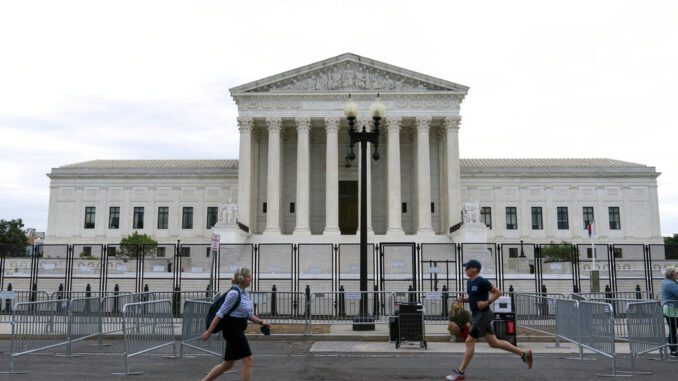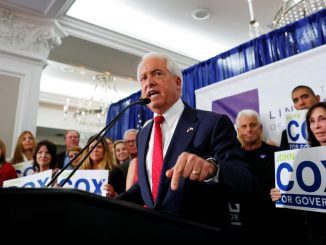
DEI — “diversity, equity and inclusion.” University administrators, corporate human resources facilitators and politicians of a liberal stripe all assure us that America is now, suddenly, for the first time in history, a nation of diversity, equity and inclusion.
We are no longer, in this view, a white bread nation where just about everyone looks the same, believes the same things, grows up in the same kind of family and eats the same bland, boring food.
There’s a grain of truth — but only that — to this view. For baby boomers, born and raised in what I call the “Midcentury Moment” between the beginning of World War II and the urban riots and anti-war demonstrations of the late 1960s, America looked like a land of cultural uniformity.
Uniformity came naturally where, in a country of 131 million, 16 million men served in a uniformed, crew-cut military. It seemed natural in an era when technology and regulation produced, temporarily, universal media — radio, movies, television — appealing to just about everybody.
But the Midcentury Moment was just that: a moment. It was a moment when many overlooked the one-tenth of people who were black, when few realized that the 1920s immigration laws would lead 50 years later to the nation’s lowest foreign-born percentage in its history.
Over the longer run of American history, diversity — religious, ethnic, racial — has been the rule rather than the exception. And the nation has moved generally, albeit sometimes haltingly or temporarily in reverse, toward greater equity and inclusion. DEI is not new; it was around at the time of the Founding Fathers.
Those founders were steeped in the history of 17th-century religious wars. They were very much aware of the religious diversity of the 13 colonies that had united to form their new nation. Virginia was founded by Anglicans, Massachusetts by Calvinists, Maryland by Catholics, New York by Dutch Reformers and Pennsylvania by Quakers.
They didn’t have historian David Hackett Fischer’s 1989 book “Albion’s Seed” to describe how settlers from different British Isles brought different folkways — religious, political, sexual — to different colonies. But they saw those differences firsthand.
Benjamin Franklin saw how they frustrated his Albany Plan of Union in 1755; George Washington saw how he needed different tactics to discipline Virginian and New England troops; James Madison and Alexander Hamilton saw how the Constitutional Convention they set in motion had to deal gingerly with the issues raised by slavery.
That’s why their Constitution provided that there be “no religious test” for office — in contrast to England’s Test Acts, which until 1829 required officials to be Anglicans. That’s why the First Amendment provided that Congress could “make no law respecting an establishment of religion or prohibiting the free exercise thereof.”
The founders weren’t blind to equity either. Legislatures passed laws and courts issued rulings providing for the phased-in abolition of slavery in Pennsylvania, Massachusetts, New Hampshire, Connecticut and Rhode Island between 1780 and 1784. New York followed rapidly in 1799 and New Jersey in 1804. Virginia, the largest state, passed a manumission law making it easier to free slaves in 1786. Congress in 1787 provided there would be no slavery in the Northwest Territory, north of the Ohio and east of the Mississippi.
Contrary to the impression fostered by the New York Times’s 1619 Project, the colonies that became the United States were not unique in establishing slavery. But in the wake of declaring their independence on the grounds that “all men are created equal,” the young republic led the way in abolishing slavery where it existed.
Progress was not smooth or even, as the spread of slavery to the Deep South cotton belt halted the trend. The 1850 Fugitive Slave Act and the Supreme Court’s 1857 Dred Scott v. Sandford decision threatened to spread slavery into the free states. That led to the election of Abraham Lincoln in 1860, followed by Southern secession, civil war and the abolition of slavery.
But over the years, other issues that could have rent the national fabric were often avoided because the Founding Fathers carefully created a limited federal government, leaving divisive issues to sovereign states.
The Supreme Court’s Dobbs v. Jackson Women’s Health Organization decision last week is squarely in this tradition. It returns the contentious abortion issue to the states and the voters, ending the widely resented court-imposed national regime imposed by Roe v. Wade in 1973.
It appears that voters will maintain the status quo in states where, according to the Guttmacher Institute, 71% of abortions took place in 2017 and will be effectively banned in states which had only 10%. Roe, like Dred Scott, failed to impose uniformity of belief on a fraught moral issue in a nation whose founders knew, even if too many of its boomers forgot, that it has always been a land of diversity that has striven for equity and inclusion.
Michael Barone is a senior political analyst for the Washington Examiner, resident fellow at the American Enterprise Institute and longtime co-author of The Almanac of American Politics.



